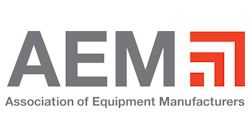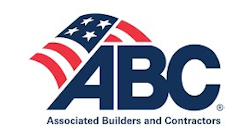When grading and excavation contractors talk about automated grade control systems these days, they often zero in on 3D systemsóthe ones that have revolutionized the way contractors move dirt by eliminating the need for stakes, hubs, and string lines and the time and labor to place and move them. They’re allowing equipment operators to grade with a degree of accuracy, speed, and simplicity unheard of just a few years ago. In doing so, these systems are increasing productivity dramatically.
Combining positioning sensors, computers, proportional hydraulic controls, and in-cab visual displays, these systems automatically adjust the elevation and cross slope of the blade to exactly match the three dimensionsóX, Y, and Z coordinatesóof a digital terrain model of the site. The most advanced of these systems let you cut and fill vertical, spiral, and super-elevated curves, transitions, and other complex designs within a tiny fraction of an inch of grade. All you do is steer the machine. The 3D system takes care of the rest.
“This technology is taking design data from the office and putting it right into the machine cab,” says Mark Forrest, Trimble’s division vice president for construction. “Because the data are there in the field, the site foreman or operator can quickly set the new grade or pad elevation right in the operator’s compartment, without waiting for grade stakes to be set or repositioned. Operators know where the grade is, as well as the locations of design elements, and are able to move more dirt each day.”
Site supervisors and grade checkers are also taking advantage of this technology to monitor work on earthmoving projects more quickly and easily when traveling around the job site on foot or in their pickup trucks and four-wheel utility vehicles.
Murray Lodge, national sales manager for Topcon Positioning Systems Inc., has been involved with machine control systems for 18 years. “I’ve never seen contractors accept technology as readily as they have 3D control,” he says.
That reflects the quick payback offered by these systems. “Some customers from around the world tell us that a 3D system can pay for itself in one month, or one job, or by improving productivity by 40%,” Forrest adds.
Future Possibilities
Some see the benefits of 3D technology extending beyond the ability to control blades on earthmoving machines. Dean Erickson, global positioning system (GPS) coordinator for the Stockton, CA, branch of Granite Construction Company Inc., sees several other applications. “I envision sending changes in a site design that come into the office today electronically to the field where a foreman can plug these new data immediately into the machines,” he says. “Or the foreman could measure the work of a whole array of scrapers digging a large basin and immediately transmit to the office an up-to-the-minute report on how many yards of dirt have been moved on the project. Also, improved efficiency in moving dirt to locate and restore utilities could reduce staffing on a project.”
Ray O’Connor, president of Topcon Positioning Systems Inc., also has some ideas about the future use of 3D blade control technology. “Over the next three to five years our ability to remotely monitor the performance of a piece of earthmoving equipment should improve,” he says. “You may be able to plug a pocket computer into a malfunctioning earthmoving machine and, using a cell phone, send digital data to an engineer at the factory who can diagnose any problems. From the office you could monitor everything on equipment in the field from fuel consumption to how many passes a machine made in a day. You may even be able to keep a record of where the blade on that machine last touched the ground.”
The goal, O’Connor says, is to get maximum performance and production from the machine. He sees 3D blade control technology as one step toward total automation of construction equipment.
“Our goal is to bring the same level of automation to the construction industry as now exists in the manufacturing industry,” O’Connor explains. “Instead of stamping out PC boards, for example, we’ll be in the business of custom-manufacturing roads or building pads. Right now, we’re only a fraction of the way there.”
Different Roles
Meanwhile, more and more grading and excavating contractors continue to capitalize on the current, very real benefits of controlling blades in three directions. One estimate puts the number of 3D systems sold in the United States since they were introduced four or five years ago at about 1,200 to 1,500 units. That compares to an educated guess of around 20,000 2D blade control systems, including simple indicate receivers, now in use.
“The two-dimensional systems represent a mature market, with relatively flat sales,” says O’Connor. “But sales of three-dimensional systems are doubling every year. We think we’ve only scratched the surface of this market.”
That’s despite hefty price tags of roughly $50,000 to $100,000 or more, depending on the system and how it’s set up. While initial up-front costs are a key consideration, it’s more important to focus on the value of the increased productivity these systems offer, say manufacturers.
“Early adopters of 3D, who had used blade control systems and understood the benefits of this technology, started buying 3D systems as soon as we introduced them,” O’Connor says. “When you’re talking about doubling and tripling productivity, it doesn’t take long to adopt this technology. Contractors would buy one unit, and as soon as they experienced the benefits, they’d be back to buy another two, three, four, or more systems.”
That doesn’t mean the end of 2D blade control systems, which have been available for 25 years or more. They’re still probably the most cost-effective way to grade a flat plane, such as a building pad or a runway. Like 3D, the 2D systems are designed to give a competitive edge by improving an operator’s efficiency when guiding and controlling the work of dozers, motor graders, scrapers, and excavators.
Two-Dimensional Systems
The most basic blade control technology improves manual operation of the blade’s elevation for grading a flat plane or one sloping in a single direction. Others provide the ability to control both blade elevation and cross slope to grade a surface that slopes in two directions. Adding proportional valve controls to the machine’s hydraulics converts it to automatic blade control. Depending on the degree of sophistication, some 2D systems can also eliminate the need for grade checkers.
Two-dimensional systems feature a signal transmitter and a machine-mounted receiver, which measures the location of the blade in relation to the signal to grade a horizontal or sloping flat plane. A laser system uses a rotating beacon that emits a beam of light that strikes photo cells in a receiver mounted on a blade mast, where they’re converted to electrical impulses. This, in turn, activates hydraulic valves that raise or lower the blade to achieve the horizontal or sloping grade set by the beam of laser light. A sonic system bounces signals off a physical reference surface, such as a curb, a string line, or a previous pass, to control the blade when elevation of the desired grade varies or doesn’t rise or fall at a constant rate.
In manual or indicate mode, an in-cab display, usually colored lights or arrows, tells the operator to raise, lower, or maintain the blade position, as needed, to reach grade. In automatic mode, this display shows how the blade is being controlled to meet cut-and-fill requirements.
“Typically, with all 2D and 3D systems, operators use indicate mode for the first few passes during the mass excavation stage,” says Forrest with Trimble. “Once they get to the finishing stages, they’ll switch to automatic mode to get a tight, smooth finish.”
This 2D technology offers the least expensive approach to blade control, with prices ranging from about $3,000 to $4,000 for a basic laser indicate system to $20,000 or more for the most advanced systems.
Three-Dimensional Systems
Three-dimensional blade control systems combine pinpoint positioning equipment with 3D digital site designs for grading in a stakeless environment. In addition to positioning and measuring devices, these systems feature an onboard computer that can be loaded with a digital card, like those used in digital cameras to store images. This card contains a 3D model of the site work and is used to calculate the required cut or fill to grade. That information is transmitted to the machine’s hydraulics, which controls the blade to match the design as the machine moves around the job site.
Applications include grading vertical curves, such as a road going up and down a hill; super-elevated curves, like those on a freeway exit; crowns in roads, slopes, and valleys at a golf course; or other surfaces requiring a compound curve. Typically, these systems are used in manual mode for rough grading and then switched to automatic mode for finish work.
Two types of 3D systems are available:
GPS
This technology is based on constellations of satellites (the US NAVSTAR Global Positioning System and Russia’s Glonass system) and features two receivers. One, the base station, is fixed in one place. The other is mounted on a rover, such as a dozer, a motor grader, or an excavator. This computer uses the information from the receivers, such as the angle and distance to a satellite, to determine the exact position and slope of the blade. Positioning information appears on a monitor in the cab in plan view, cross-section view, and profile view plus design cross slope and distance of cutting edge from finish grade. Meanwhile, lightbars display cut-and-fill data. In manual mode, these data are used to guide the operator. In automatic mode it actuates the hydraulic valves that control the blade.
Any number of receiver-equipped machines can work off one base station, a significant feature considering that the cost of one base station ranges from about $20,000 to $25,000. Elevation accuracy of this technology depends on the number of satellites in your sight line. However, this number varies with time of day as the relative position of your location and the constellation of satellites changes. It’s also affected by the number of buildings, hills, and mountains that may be blocking satellite signals. As a result, most manufacturers guarantee accuracy only to within 0.1 foot (3 centimeters). That is good enough for rough grading but doesn’t meet the tighter tolerances demanded for finish grading.
Robotic Total Station
With an elevation accuracy as close as plus-0.01 foot (2.5 millimeters), this system offers the precision needed for fine-grading applications. A sophisticated survey instrument locks onto a target mounted on the blade of the machine, measuring the target’s position and sending this information to a computer in the cab that determines the desired elevation and slope for that position. This system includes a target recognition feature that allows the robotic total station to lock onto the desired target while ignoring other active targets, such as those on other machines or survey crews or reflective surfaces. If a passing vehicle or another object interrupts the signal, the station quickly and automatically relocates the target. Because one robotic total station can control just one machine, this approach is more expensive than a GPS.
Despite the technical complexities of these systems, learning to use them productively is a relatively easy and fast process, say contractors who’ve used them.
“Usually, it takes a day or two for an operator to begin to feel comfortable with 3D technology and maybe a couple of weeks for the company, as a whole, to start adapting to this new process,” says Tom Bucklar, Caterpillar’s machine control regional manager for North America.
A modular 3D blade control system offers the ability to start with a basic 2D unit and add a GPS or a total robotic station later as the budget permits.
Regardless of which type of blade control system you choose, it’s a good idea to rely on experts to help you select the best one to match your needs, notes Mike Hasslbauer, Trimble original equipment manufacturer representative.
“Consult with a manufacturer’s salespeople and find a good supplier and stick with them,” he says. “That way, if you call for service, you only have to deal with one person. That can make tracking down any problems much easier.”








